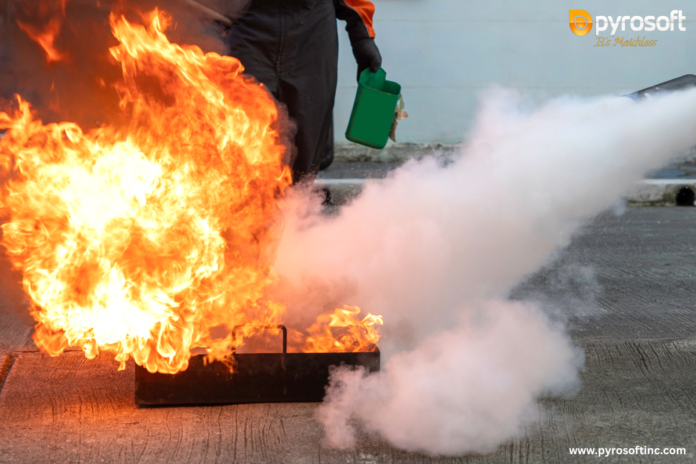Few things are as serious a hazard to workplace safety as the possibility of fire. There is always a risk of fire, whether it is in an office building, an industrial setting, or an educational institution. However, people and organizations can greatly reduce this risk if they receive the appropriate training and preparation. Proactive fire safety measures are not only required by law in Ohio, but they are also morally right for the sake of the community’s and employees’ safety.
Understanding Fire Safety Training
The goal of fire safety training is to provide people with the information and abilities needed to prevent fires, react to emergencies quickly, and reduce possible harm and casualties. It covers several topics, such as how to prevent fires, how to evacuate, and how to utilize firefighting tools like extinguishers correctly.
Businesses and organizations in Ohio are required by both state and federal legislation to give their staff members thorough training on fire safety. The identification of fire threats, the significance of keeping clear evacuation routes, and the procedures for notifying authorities and starting emergency actions are usually included in this training. It also highlights how important it is to have frequent exercises and rehearsals so that everyone is aware of their duties and responsibilities in the event of a fire.
The Importance of Fire Extinguisher Training
Fire extinguisher training focuses on a crucial component of firefighting: the appropriate use of fire extinguishers. Fire safety training provides a general overview of preventive measures and emergency protocols. When a small fire occurs, it can be put out quickly and effectively with a fire extinguisher, preventing a larger disaster from developing.
In Ohio, hands-on fire extinguisher training is integral to ensuring that individuals possess the confidence and competence to operate these essential firefighting tools. Participants learn about the different types of fire extinguishers and their respective applications, the PASS technique (Pull, Aim, Squeeze, Sweep) for using an extinguisher effectively, and safety precautions to observe while combating a fire. By simulating realistic fire scenarios, this training instills muscle memory and quick decision-making skills, empowering individuals to act decisively when faced with a fire emergency.
Hands-On Fire Training in Ohio: Bridging Theory with Practice
Although academic understanding establishes the foundation for fire safety readiness, concepts are implemented via hands-on, practical training. Hands-on fire training in ohio, immersive experiences that mimic actual fire occurrences are provided as part of hands-on fire training programs, which go beyond simple classroom instruction. These courses are meant to test participants in safe settings so they can use what they’ve learned and hone their abilities in practical settings.

The practical fire training provided by Ohio’s fire departments and specialized training facilities is one such instance. Live fire demonstrations are a common feature of these programs, where participants are exposed to controlled fires and instructed in safe extinguishment techniques. Participants put on protective gear and navigate smoke-filled surroundings while learning firefighting and evacuation techniques under the guidance of knowledgeable instructors.
The Role of Technology in Fire Safety Training
Amidst a period marked by swift technological progress, the field of fire safety education is changing to incorporate cutting-edge instruments and methods. For example, virtual reality (VR) simulations provide a low-cost and safe way to introduce people to authentic fire scenarios without the risks involved in live-fire drills. VR training modules allow users to practice making decisions, practice handling a variety of emergencies, and become acquainted with various firefighting tools in a virtual setting.
Additionally, remote learning and certification are made possible by technologically advanced training systems, which give users access to in-depth fire safety training courses whenever it’s convenient for them. These platforms frequently include interactive features, tests, and educational films to successfully engage students and reinforce important topics.
Conclusion: Empowering Communities through Fire Safety Training
In Ohio, taking preventative measures to ensure fire safety is not only required by law but also by morality. Individuals and organizations may preserve lives, protect property, and honor their responsibility to the welfare of the community by investing in thorough fire safety training. Every facet of fire training—from academic understanding to practical application—is essential to equipping people to successfully handle the difficulties presented by fire situations. Ohio continues to set the bar for excellence in fire safety preparedness by means of continuous education, innovation, and cooperation, guaranteeing a more secure and resilient future for everybody.


















